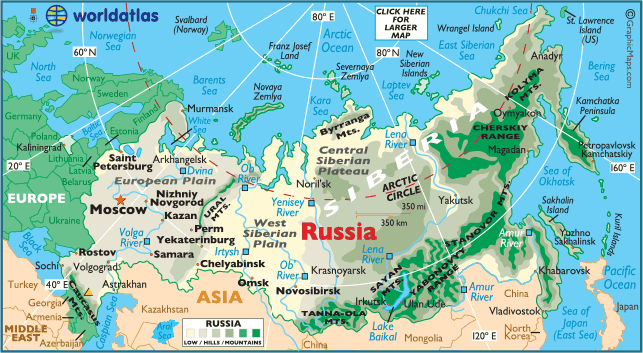
Modern map of Russia. Source: worldatlas.com
In 1768, when Peter Simon Pallas was about 26 years old, he was offered the position of Professor of Natural History at the Academy of Sciences in St. Petersburg by Catherine II- the Empress of Russia at the time. At this time, Catherine II, also known as Catherine the Great, had begun to organize a group of scientists to go on an expedition throughout her empire. The past research conducted on the nature of her empire had been conducted by foreign scientists. Being irritated by a French astronomer who had conducted research in her empire and later insulted Russia’s lack of scientific accomplishment, Catherine the Great commissioned the Academy of Sciences to go on a Siberian Expedition. The initial purpose of the expedition was to observe the passage of Venus in front of the son. However, Catherine the Great and the several scientists she selected for the journey expanded this plan to include scientific reports on the natural processes and the communities living in her empire (Parker 70). These reports were accompanied with strict instructions. Not only were the scientists required send frequent reports back to St. Petersburg, but, in the winter, they created manuscripts containing all their data and discoveries. Along with the written reports, all samples found in the field were supposed to be put in crates and immediately sent to the Academy for analysis (Parker 72). The research included geography, meteorology, astronomy, pedology, hydrology, and the scientists’ best recommendations for the use of vacant land in Siberia (Geike, 177). Therefore, the team for the expedition included seven astronomers and geometers, five natural scientists, and research assistants (Geike, 178). The team departed from St. Petersburg on June 21st, 1768 and travelled to the Volga River, through Samara, through the Ural Mountains, and into Siberia. Peter Simon Pallas, upon request from the Empress Catherine, sent back regular reports on the group’s findings.
